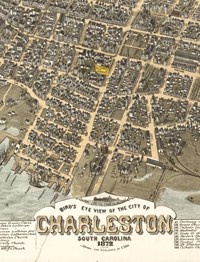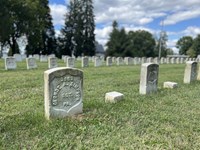- Boston National Historical Park (114)
- Saratoga National Historical Park (70)
- Valley Forge National Historical Park (32)
- Boston African American National Historic Site (27)
- Charles Young Buffalo Soldiers National Monument (24)
- Fort Stanwix National Monument (20)
- Gettysburg National Military Park (19)
- Golden Gate National Recreation Area (18)
- Manassas National Battlefield Park (17)
- Show More ...
- National Heritage Areas Program (8)
- Wildland Fire Program (5)
- Geologic Resources Division (3)
- American Battlefield Protection Program (2)
- Continental Divide Research Learning Center (2)
- Harpers Ferry Center (2)
- National Center for Preservation Technology and Training (2)
- Archeology Program (1)
- Commercial Services Program (1)
- Show More ...
Showing 558 results for Regiments ...
128th New York Monument
The Legacy of the Port Royal Experiment
William Moultrie
- Type: Person

William Moultrie's 2nd South Carolina Regiment successfully defended Charleston Harbor from the Royal Navy in the Battle of Sullivan's Island on June 28, 1776. This Patriot victory marked the beginning of a meteoric rise for Moultrie as he achieved the rank of general and later served South Carolina as governor.
- Type: Person

Banastre Tarleton, a British army officer, famously commanded the British Legion, a provincial regiment composed of loyalist infantry and dragoons, in the southern theater under Lord Cornwallis during the Revolution. Feared for his ruthlessness by the patriots, his early successes in the field earned him notoriety. Defeated at the Battle of Cowpens by Brig. Gen. Daniel Morgan, Tarleton's favor with Cornwallis declined. Tarleton was present at the surrender at Yorktown.
- Type: Person

Best known today for his military campaigns against the Indians before and after the Civil War, George Crook rose from the command of the 36th Ohio Infantry to the command of a cavalry division which fought in Tennessee and southwestern Virginia. During the war he became friends with future president Rutherford B. Hayes.
Information Panel: Retreat From Chinn Ridge
- Type: Place

Colonel Oliver O. Howard's brigade brought up the rear of the Federal flanking column. After crossing Bull Run, the New Englanders hastened toward the sounds of battle. In the mid-afternoon heat, dozens of men straggled on the march or collapsed by the roadside. By the time they reached the front, Union hopes for victory were fading.
- Type: Person

John Pegram was a career United States army officer and West Point graduate who resigned his commission in 1861 to accept a position in the Confederate army. In the summer of 1861, at Rich Mountain, Virginia, he became the first former US Army officer to be captured by Federal forces when he surrendered his entire regiment. Pegram returned to the Confederate army and served until his death in February 1865.
- Type: Person

Charles Lee, former British Army officer, became the second highest ranking general of the Continental Army during the American Revolution. On June 28, 1776 he oversaw the victory at the Battle of Sullivan's Island in Charleston, SC. Two years later, his retreat on the field at the Battle of Monmouth Courthouse would result in his court martial and the end of his military career. Learn more about this controversial figure here.
William Gifford
New York State Monument
- Type: Place

One of the tallest monuments on the field at about 58 feet tall, it was dedicated September 17, 1920, on the 58th Anniversary of the Battle of Antietam. The bronze tablets list the generals from New York who were in command and the New York regiments and batteries at Antietam and depict the New York State coat of arms. Almost one-fourth of the Union army at Antietam was from New York. Over 250 Civil War veterans attended the dedication.













